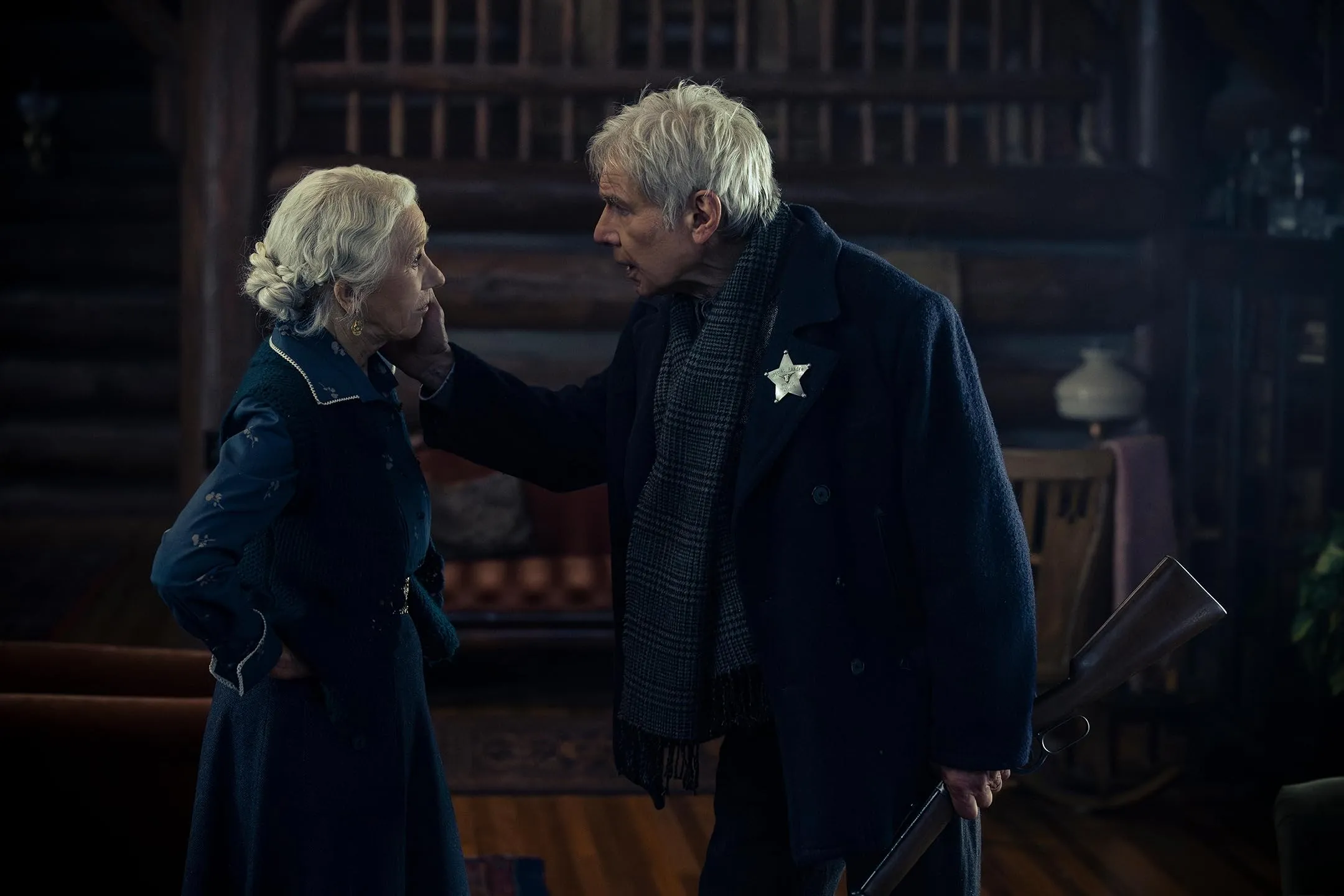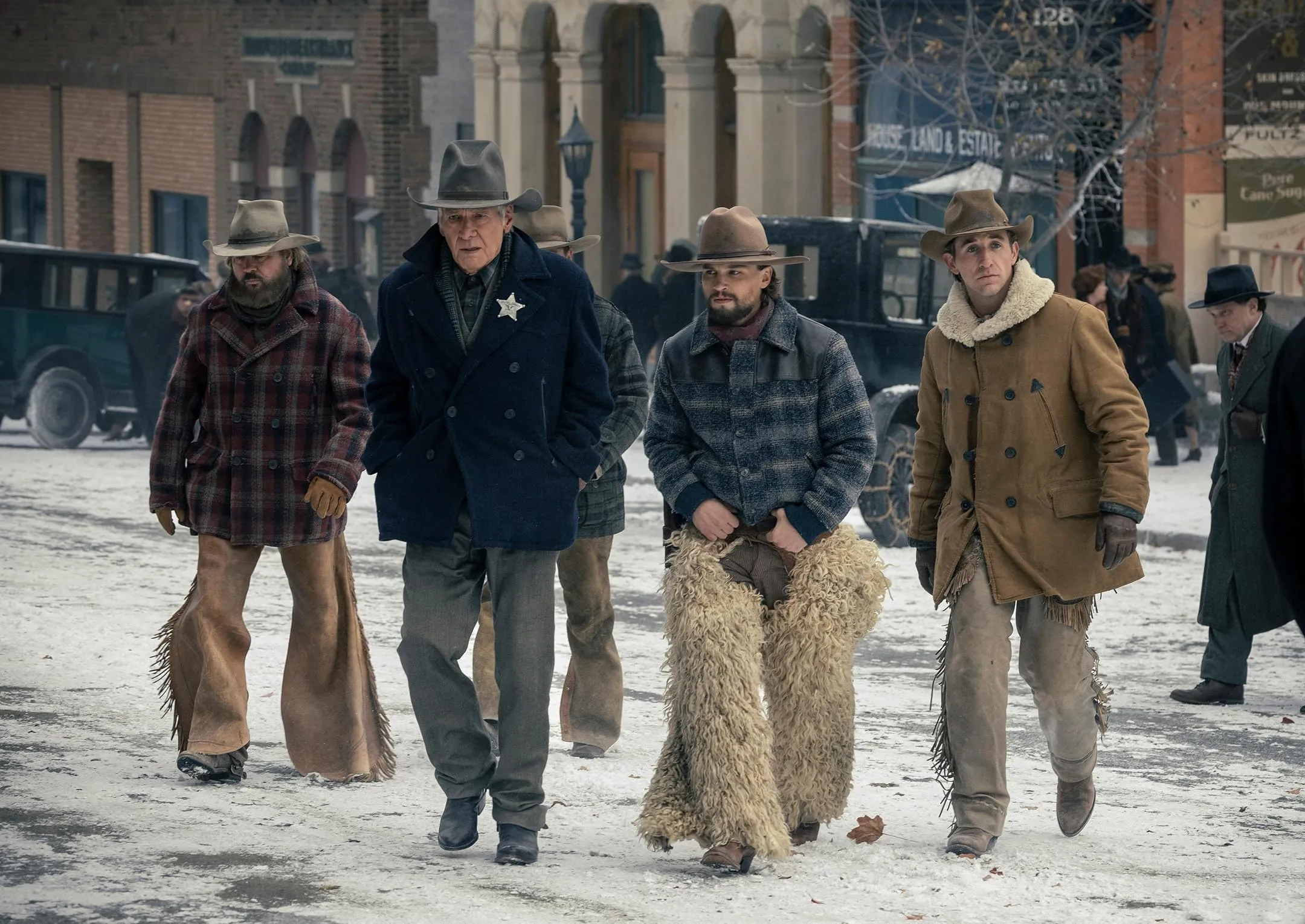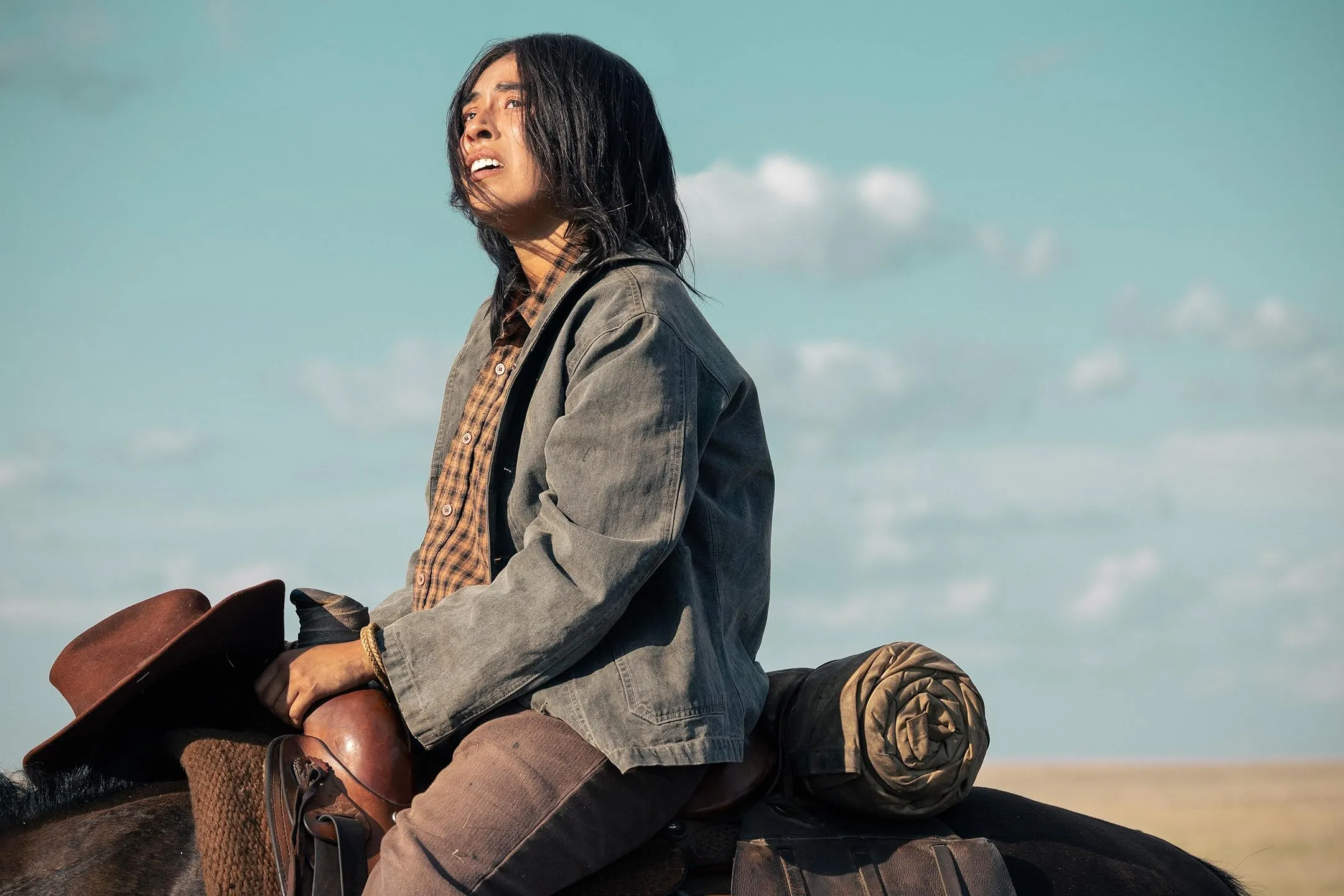Season 2 of 1923 begins with a sense of quiet after the intense finale of its first season, where the Duttons faced critical challenges. Winter’s cold descends over Montana, creating extreme pressure for the family.
Jacob (Harrison Ford) and Cara (Helen Mirren) continue battling to protect their property from Donald Whitfield (Timothy Dalton), a mining magnate whose influence threatens the Duttons’ existence. Financial challenges force the family to confront the brutal landscape and economic pressures defining the American West.
The new season explores established narrative connections from Season 1, particularly focusing on Spencer Dutton (Brandon Sklenar) and his wife, Alexandra (Julia Schlaepfer), whose separation remains a compelling emotional thread.
Spencer travels toward Montana amid dangerous circumstances, while Alexandra struggles in an unfamiliar environment. Teonna Rainwater (Aminah Nieves) experiences a critical struggle for survival, escaping violent persecution from U.S. Marshals and religious institutions, distanced from her cultural roots. These stories build tension as the Duttons’ experience reflects broader human conflicts.
Survival, Power, and Justice: 1923 Season 2’s Uneasy Reflection of a Divided America
1923 Season 2 explores a world where survival demands more than physical endurance. The Duttons confront economic collapse against Montana’s unforgiving winter. Snowdrenched mountainscapes reveal the raw struggle for human existence.
The landscape emerges as a merciless character, testing family resilience. Jacob and Cara Dutton’s fight transcends land ownership—it speaks to preserving heritage and traditional ways of living threatened by economic predation.
Donald Whitfield, portrayed by Timothy Dalton with cold calculation, embodies the destructive forces of wealth and control shaping the American West. His manipulation of the Duttons reflects deeper historical conflicts between established communities and external economic interests. The narrative exposes systemic pressures threatening family lands and traditional lifestyles.
Subtle explorations of social injustice emerge through character experiences. Zane and Alice’s story highlights racial tensions, while Teonna Rainwater’s journey represents Indigenous resistance against institutional violence.
The series reveals complex historical wounds—religious oppression, colonial aggression, and systematic marginalization of vulnerable communities. Each character’s struggle interconnects, painting a nuanced portrait of survival against overwhelming societal pressures.
Character Performances in 1923 Season 2: From Survival to Resistance
The core of 1923 Season 2 emerges through its characters’ powerful performances. Jacob (Harrison Ford) and Cara Dutton (Helen Mirren) remain central to the family’s survival narrative. Ford portrays Jacob as a weathered man balancing hardness with hidden compassion.
His character embodies the struggle of frontier life—tough yet deeply emotional. Mirren’s Cara provides emotional strength, her character oscillating between fierce protection and vulnerable moments. Their partnership defines the Dutton family’s resistance against overwhelming challenges.
Spencer Dutton, played by Brandon Sklenar, arrives with complex emotional weight. A war veteran wrestling with internal scars, Spencer moves through the season with quiet intensity. Sklenar captures the character’s inner conflict—a man seeking healing while confronting past traumas. His journey back to Montana represents more than physical travel; it becomes a path of personal reconstruction.
Julia Schlaepfer transforms Alexandra from a sheltered aristocrat into a resilient traveler. Her character moves from passive observer to active survivor, challenging expectations of women during the era. The transformation reveals deeper truths about personal growth and adaptation.
Aminah Nieves portrays Teonna Rainwater with extraordinary depth. Her character embodies resistance against systemic violence, representing Indigenous struggles against cultural erasure. Nieves creates a performance that speaks to historical pain and individual strength, presenting Teonna’s story as a powerful statement of survival and identity.
The Cinematic Landscape of 1923 Season 2: Nature as Both Adversary and Symbol
1923 Season 2 uses visual storytelling to reveal the Dutton family’s intense struggle. Cinematography captures Montana’s winter with stark imagery. Snow-covered mountains and empty fields become characters themselves.
Sweeping landscapes expose the raw challenge of human survival. The frozen terrain speaks to the family’s vulnerability, showing how environmental pressures test human endurance.
Wildlife emerges as a critical element in the narrative. Lions and wolves represent more than animal predators—they symbolize external threats facing the Dutton family. These creatures move through the landscape with threatening precision, mirroring human conflicts.
Carefully framed scenes show animals as key storytellers, revealing the brutal connection between natural and human worlds. Each encounter with wildlife communicates deeper messages about survival, territory, and fierce resistance.
Cinematographic choices transform the environment into an emotional backdrop. Slow-motion sequences of snowstorms and animal movements create tension. The visual language speaks without words, communicating the characters’ internal struggles through exterior landscapes.
Stark white backgrounds and sharp animal silhouettes communicate the constant threat surrounding the Dutton family—an unspoken war between human determination and environmental challenges.
Pacing and Plot Development in 1923 Season 2: A Delicate Dance of Set-Up and Tension
1923 Season 2 approaches storytelling with calculated patience. The early episodes create a deliberate atmosphere of brewing tension. Character development takes center stage, moving beyond rapid plot progression.
Spencer’s return to Montana unfolds as an intimate exploration of personal struggle. His journey reveals psychological wounds from past experiences, presenting a nuanced portrait of a war-scarred individual.
Teonna’s storyline emerges as a powerful thread of resistance. Her escape from oppressive institutions builds quiet intensity. Each scene captures her determination to survive against systemic violence. The narrative carefully constructs her path, suggesting future confrontations with deep emotional weight.
Separate character arcs begin to converge with subtle complexity. Spencer’s internal battles, Teonna’s fight for freedom, and the Dutton family’s land preservation create interconnected threads. Small moments of character interaction hint at larger conflicts brewing beneath the surface. Unspoken tensions grow, suggesting explosive potential in future episodes.
The storytelling approach prioritizes emotional depth over immediate action. Quiet scenes reveal character motivations and inner struggles. Viewers witness the intricate emotional landscape of characters fighting for survival in a harsh world. Each character’s journey becomes a window into broader human experiences of resistance, family, and resilience.
Villains and Conflict in 1923 Season 2: Capitalism, Corruption, and Colonialism
Timothy Dalton creates a haunting portrayal of Donald Whitfield in 1923 Season 2. Whitfield emerges as a cold economic predator, embodying the ruthless spirit of industrial expansion.
Dalton performs with calculated stillness, revealing a character who views human lives as expendable resources. His subtle manipulations expose a deeper system of economic violence. Each interaction demonstrates Whitfield’s belief that wealth justifies all actions.
Whitfield represents the brutal economic machinery destroying traditional ways of life. His strategies target the Dutton family through financial pressure and strategic intimidation. The character strips away human dignity, seeing people as obstacles or tools for personal gain. His calm demeanor masks a profound moral emptiness.
Banner Creighton (Jerome Flynn) provides a violent counterpoint to Whitfield’s calculated approach. Flynn’s character acts as a direct physical threat to the Dutton family. His raw aggression contrasts with Whitfield’s intellectual manipulation. Together, they create a complex network of pressure against the Dutton family’s survival.
The narrative exposes systemic attacks on rural communities. Whitfield and Creighton represent external forces seeking to destroy traditional family structures. Their actions reveal deeper patterns of economic aggression that strip land and dignity from established communities. Each scene peels back layers of historical economic violence.
Cultural and Social Issues in 1923 Season 2: Unmasking America’s Dark Legacy
1923 Season 2 explores deep-rooted social injustices through powerful storytelling. The series dissects historical racism and systemic oppression with unflinching clarity.
Miscegenation laws emerge as a critical narrative thread, exposing legal mechanisms that protected white supremacy. Zane and Alice’s story reveals how institutional racism destroyed personal connections, tearing families apart through calculated legal violence.
Teonna Rainwater’s storyline creates a devastating portrait of Indigenous persecution. Her struggle against U.S. Marshals and religious institutions exposes generations of cultural destruction. Father Renaud represents systemic violence targeting Indigenous communities. Each scene strips away romantic narratives about American expansion, revealing raw historical trauma.
The narrative moves beyond simple historical documentation. Characters like Teonna become living embodiments of resistance. Violent encounters with institutional forces show how individual survival connects to broader community struggles. Teonna’s journey speaks to generational pain, highlighting Indigenous resilience against calculated attempts to erase cultural identity.
Storytelling refuses to soften historical violence. Raw depictions of persecution create emotional impact. Viewers witness the direct human cost of systemic racism. Indigenous characters are portrayed with complex humanity, challenging simplified historical narratives about cultural encounters.
The Review
1923 Season 2
1923 Season 2 masterfully deepens its exploration of survival, power, and systemic oppression while weaving complex narratives about the Dutton family and Indigenous struggles. The series' deliberate pacing, coupled with stellar performances and cinematic visuals, makes it a slow burn worth waiting for. Its fearless confrontation of historical injustices and critique of capitalist greed sets it apart from other period dramas. While some storylines may feel underdeveloped, 1923 remains a thought-provoking and visually stunning testament to the power of historical storytelling.
PROS
- Strong performances, particularly from Harrison Ford, Helen Mirren, and Brandon Sklenar.
- Thoughtful exploration of social justice, racism, and Indigenous displacement.
- Stunning cinematography that enhances the narrative.
- Complex and intertwining storylines that build anticipation for future payoffs.
CONS
- Pacing may feel slow, especially in the early episodes.
- Some secondary storylines, like Teonna’s, feel underdeveloped.





















































